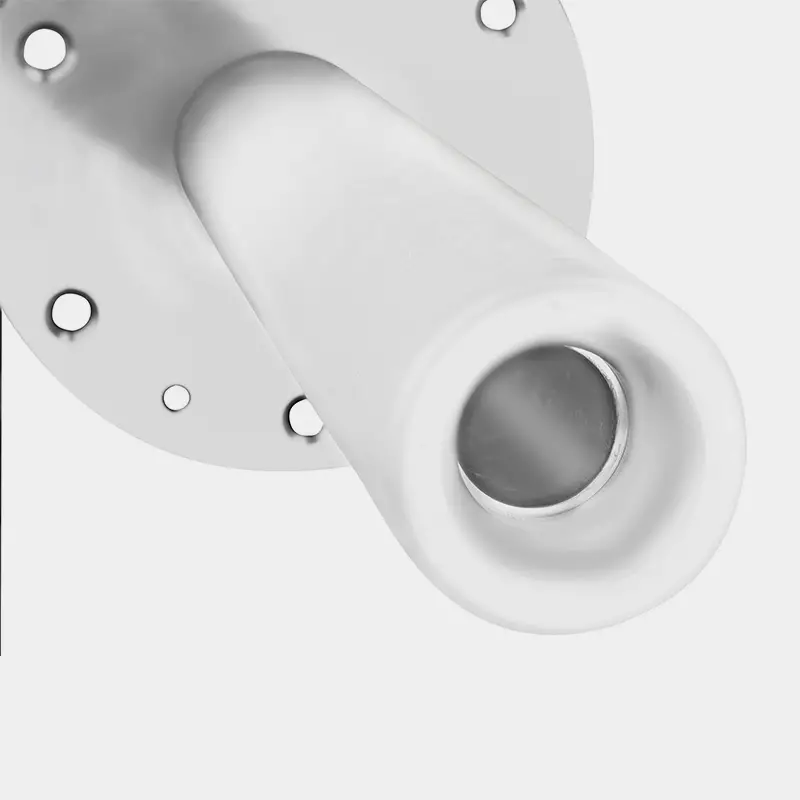According to their materials, production, and design, transformer bushing types can be broadly categorised into the following groups:
- Bushing made of OIP (Oil-Impregnated Paper)
- Bushing made of resin-impregnated paper (RIP).
- Resin-infused synthetic (RIS) Bushing
- Paper Resin Bonded (RBP) Bushing
- Epoxy Cast Bushing
Bushing for OIP Transformers:
In the high voltage power business, OIP bushing is the most popular bushing design. Using conductive inserts all the way around the centre tube, OIP bushings are constructed from untreated kraft paper. An aluminium layer positions the conductive blade in a planned and extremely precise axial and radial position; these inserts modify (control / affect) the electric field. The insulation of the capacitor is saturated (impregnated) with oil to provide the bushing adequate dielectric strength. Mineral oil is usually often the oil that is utilised (the same as that used in power transformers and switchgear).
Transformer Bushing, RIP
A dry sleeve is referred to as having resin impregnated paper (RIP) Bushing if the principal insulation is made of core-wound crepe paper that has then been impregnated with cured resin. The outside insulator is made of a composite material that may include silicone or porcelain.
OIP and RIP transformer bushing comparison:
1. Level of partial discharge
Resin impregnated paper (RIP) bushings often have a lower partial discharge level than oil impregnated paper (OIP) bushings.
The partial discharge level in resin impregnated paper (RIP) is typically less than 2pc. Although wound crepe paper was first impregnated with hardened resin, the partial discharge in oil impregnated paper (OIP) is less than 5 PC. The outside insulator is made of a composite material that may include silicone or porcelain.
2. Tan Delta value
The tan delta value for resin impregnated paper (RIP) bushings is small.
Tan delta value for resin-impregnated paper (RIP) bushing is 0.35% or less. The tan delta value for oil-impregnated paper bushing, however, is typically 0.45% or less.
3. Grade of insulation
IEC standard 60137 specifies that rip bushings have an insulation grade of class E (up to 120 ° C), while OIP bushings have an insulation grade of class A (up to 105 ° C).
4. Transport and weight
About half as much weight as the ceramic OIP bushing is carried by the composite rip bushing. Therefore, handling, transporting, and installing rip bushing is made simpler.
OIP bushings are also more prone to deterioration during handling, installation, and transit.
5. Earthquake resistance and mechanical toughness
The standard rip transformer bushing has been demonstrated to have a good level of seismic performance, according to IEEE 693-2005. OIP bushing has relatively poor seismic performance, though.
Additionally, as compared to the medium strength of OIP transformer bushing type, the mechanical strength of rip transformer bushing type is extremely strong.
6. Setup and commissioning
The benefits of rip transformer bushing type over OIP bushing are as follows:-
Any angle can be used to place rip sleeves either horizontally or vertically. However, there is a restriction on the installation method for OIP bushings, which only allows for a 30-degree angle from vertical height.
Oil drain is necessary for Rip bushing but not when removing or installing OIP bushing.
Additionally, rip bushing is significantly easier to install than OIP bushing.
7.Maintenance
Because there is no oil or porcelain in resin-impregnated paper transformer bushing, it needs less maintenance and inspection.
8. Explosion danger and flammability
The rip transformer bushing type uses no insulating oil and is therefore inflammable.
This characteristic also renders the casing non-explosive.
The likelihood of explosion is extremely high in the event of OIP transformer bushing type, though, because of insulation failure or arc. Due to the fragility of the outside porcelain covering, insulation failure or arcing can result in a large explosion as well as being harmful.







